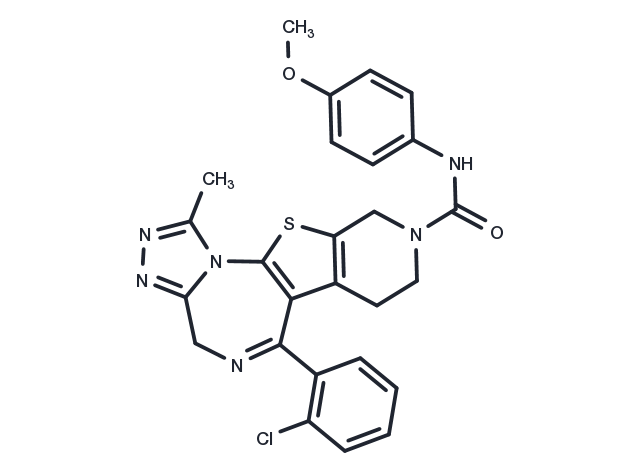Powder: -20°C for 3 years | In solvent: -80°C for 1 year


Setipafant is an antagonist of the platelet-activating factor.

| Pack Size | Availability | Price/USD | Quantity |
|---|---|---|---|
| 25 mg | 8-10 weeks | $ 1,970.00 | |
| 50 mg | 8-10 weeks | $ 2,580.00 | |
| 100 mg | 8-10 weeks | $ 3,400.00 |
| Description | Setipafant is an antagonist of the platelet-activating factor. |
| In vivo | Pretreatment of the animals with one or other of the structurally unrelated PAF receptor antagonists, BN 52021 (10 mg/kg, i.p.) or Setipafant (1 mg/kg, i.p.) significantly decreases Dexamethasone-induced gastric damage. Animals are separated into six groups: U4, controls; S, sham-operated animals undergoing laparotomy; I4 and I9, ligation of the mesenteric vessels in the last ileal loop; IT4 and IT9, same procedure together with treatment with Setipafant (50 mg/kg) orally before and after surgery and intraperitoneally during surgery. Animals are killed at day 4 in groups U4, S, I4, and IT4 and on day 9 in groups I9 and IT9, with histological studies and mediator measurements taken. Macroscopic and histological lesions of the intestinal wall in groups I4, I9, IT4, and IT9 are similar to those of human neonatal necrotizing enterocolitis and do not vary according to the absence or the presence of Setipafant treatment. Peritoneal bands are significantly reduced in treated groups IT4 and IT9 as compared with untreated ones I4 and I9. Mucosal PAF levels in the terminal ileum are higher in group I4 than in groups U4 or I9. In the upper loop, mucosal PAF levels are comparable in all groups. An increase in stool PAF levels is observed only in group I9, whereas values comparable to those observed in controls are detected in other groups [1][2]. |
| Synonyms | BN-50727, LAU-0901 |
| Molecular Weight | 519.02 |
| Formula | C26H23ClN6O2S |
| CAS No. | 132418-35-0 |
Powder: -20°C for 3 years | In solvent: -80°C for 1 year
You can also refer to dose conversion for different animals. More
bottom
Please see Inhibitor Handling Instructions for more frequently ask questions. Topics include: how to prepare stock solutions, how to store products, and cautions on cell-based assays & animal experiments, etc.
Setipafant 132418-35-0 Others BN50727 LAU 0901 BN 50727 BN-50727 LAU0901 LAU-0901 inhibitor inhibit
